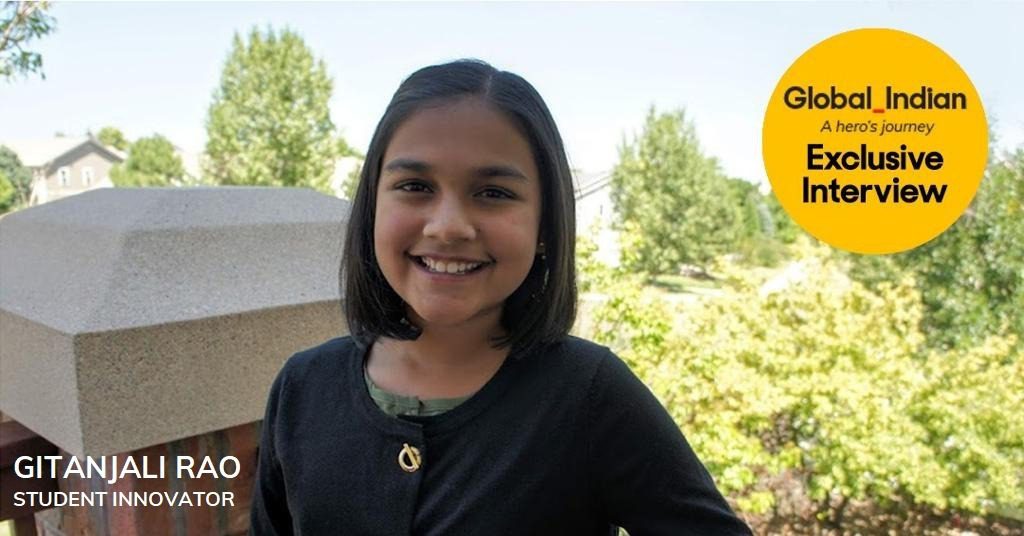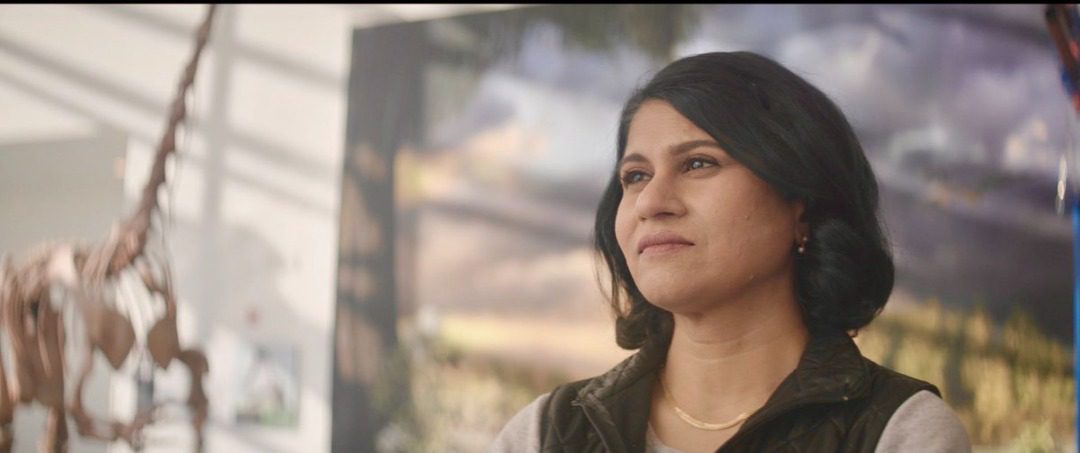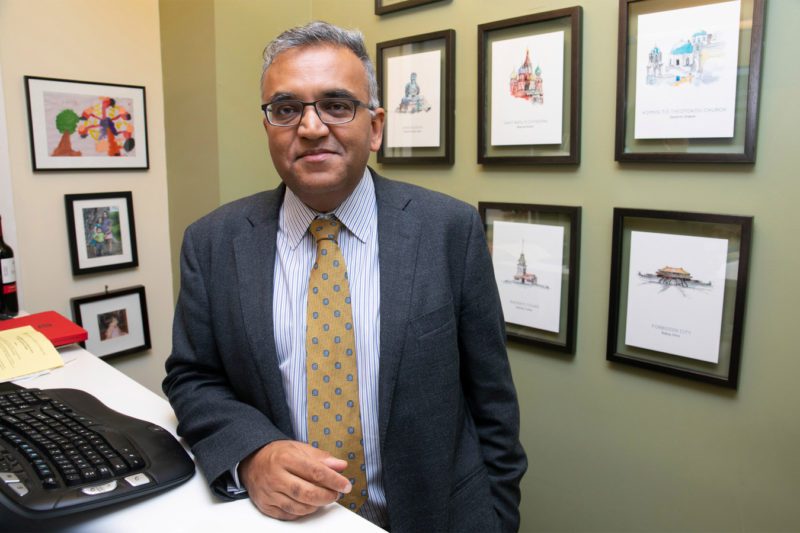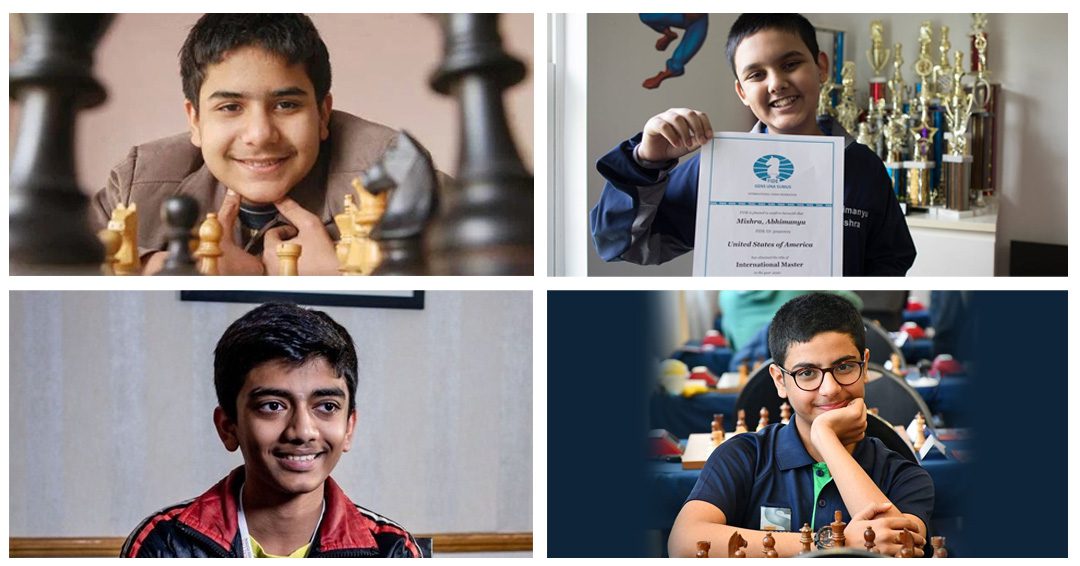GLOBAL INDIAN EXCLUSIVE
“I know a lot of people say that kids are the future, but I want to spread the message that we are here now, and we can make a difference.” – 11-year-old Gitanjali Rao in 2017
Meet Indian American teen scientist and TIME’s First Kid of the Year, Gitanjali Rao. She is wise, confident, knowledgeable, self-assured and loves reading Massachusetts Institute of Technology’s websites. A chat with her is refreshing: Lucid thoughts flow almost as if scripted. It’s hard to fathom how a 4 foot something girl with sparkling eyes oozes such clarity. Picture a pre-teen walking into the Denver Water Treatment plant with a lab coat over gummies, and holding forte among science professionals.
Gitanjali Rao invented a “Tethys” that detects lead in drinking water—she’s only 15 years old! This young woman single-handedly could do more for the residents affected by the Flint Water Crisis than the elected officials who were supposed to protect them!https://t.co/izuSEObnG7
— Ben Crump (@AttorneyCrump) February 1, 2021
In an exclusive interview with Global Indian, She radiates poise as she speaks on her first prototype in use – Tethys, which detects lead contamination in water and shares that information through Bluetooth. Her occasional giggles make this child scientist more endearing. Today, at 15, she has 11 innovations to her name, of which three are in the prototype stage with one released.
Innovation-driven by empathy
Gitanjali, named after Nobel laureate Rabindranath Tagore’s famous book of poems, has an altruistic sense of scientific purpose that takes one aback. In 3M’s Not the Science Type docuseries, she says:
“All of us can make a difference. It’s just about finding that one thing you want to change, and changing it. I want to use science to inspire kindness. Find yourself with it.”
15 year old Indian-American scientist&inventor Gitanjali Rao has been named @TIME’s 1st-ever #KidOfTheYear for her work in technology to tackle issues ranging from cyber bullying to contaminated drinking water. “If I can do it,” she says,“you can do it. Anyone can do it.” pic.twitter.com/J6fvSLDe8t
— Shashi Tharoor (@ShashiTharoor) December 4, 2020
Wearing multiple hats
A weighty quest for science guides the toothy teen scientist. She is described as a Forbes 30 Under 30, America’s Top Young Scientist, TEDx Speaker, STEM Promoter, TIME Top Young Innovator, author and student. Moreover, she is a proficient glider, pianist, classical dancer, fencer, and a (self-proclaimed) average cook. This quest started with her proclivity to ask questions. Years on, those very questions led her to solutions. First, she tackled water scarcity and contamination that led to the Tethys prototype at just 11.
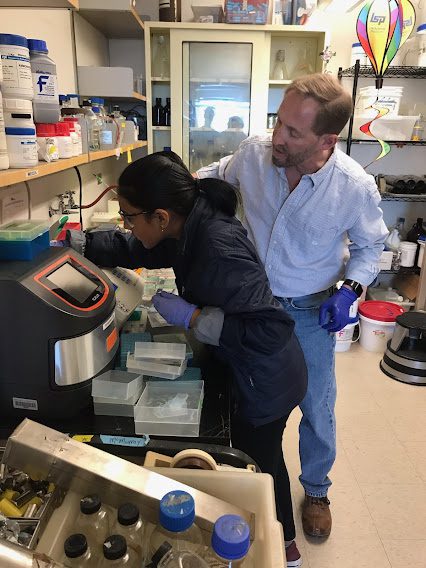
At the age of 15, Gitanjali Rao has 11 innovations to her name.
The technology, Rao says, can be easily enhanced to other contaminants. “More students, especially in the recent Regeneron Science Talent Research, Stockholm Junior Water Prize, etc have taken the same technology and enhanced it for other contaminants or water purification with doped nanotubes. Arsenic, Mercury and Cadmium are a few,” she tells Global Indian in an exclusive interview. Further, she has provided some Brazilian students her solution for further research.
“I am in the process of working with American Water Works Association to explore influencing state and federal policies on water testing,” says Rao.
She paid for Tethys materials through her Discovery Education 3M Young Scientist Challenge prize money, which she won when she was barely 12.
Addressing the opioid crisis
Rao became fixated with another question – how to address the opioid crisis – when a family friend was prescribed opioids after an accident. She developed Epione – a tool to diagnose prescription opioid addiction using an ELISA-based protein detection method. Epione works on a fluid sample and uses protein expression from the mu-opioid receptor gene to find out if a patient is at the onset of addiction. “The device uses standard colorimetry processes to identify addiction status. Results on a mobile app show the status of addiction, and includes a map of the nearest addiction centre,” Rao adds about this early-stage research.
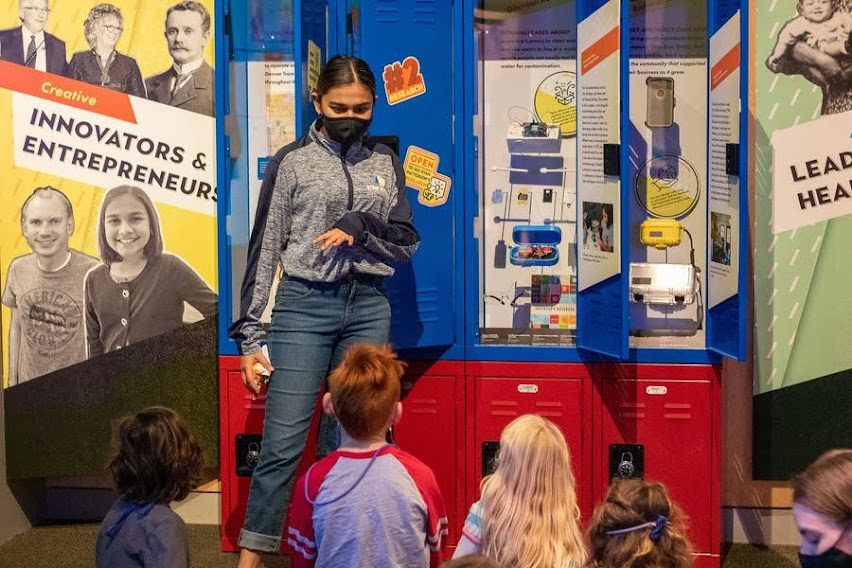
Gitanjali Rao enjoys talking about science with kids.
Parental guidance
Rao feels her upbringing – thinking, trying and ideating differently were encouraged – made problem-solving a habit. She probably inherited intellectual rigor from her parents – Rama and Bharathi Rao, who migrated from Mangalore to the US and have strong academic credentials. Her parents instilled the freedom to choose and that she says taught her to be resourceful and take risks.
“If I felt like learning to fly a glider, I had to earn it, find a scholarship. If I wanted to attend a space camp, I had to search for scholarships and apply. To learn more about a concept, they would help me search for an expert, article or professor. They ensured I was safe, and allowed me to take risks.”
Today, she has a student’s flying license and can fly a glider.

Gitanjali Rao learning how to fly.
The Raos knew they were raising a special kid very early on. As a 10-year-old, a parent can expect the kid to ask for a new video game or a toy but the Raos had to service a carbon nanotube request.
‘Kindly’ to prevent cyberbullying
Among the other technologies that Rao has developed is Kindly, where she started with the question of how to prevent cyber threats. Kindly is an anti-cyber-bullying app that detects words related to cyberbullying using machine learning and natural language processing. As trailblazers go, her meeting with Microsoft CEO Satya Nadella helped guide her with the initial prototype for Kindly. In an awe-inspiring meeting, Nadella was “kind enough to meet a 13-year-old, listen to her ideas and support,” she says.
Kindly has a Beta standalone app and browser extension now, and she has partnered with UNICEF to roll this out as a product that can be used worldwide to measure the number of preventable cyberbullying events.
Promoting STEM education through innovation workshops
A three-time TEDx speaker and winner of the US President’s Environmental Youth Award, Rao is hoping to solicit new innovators to address the world’s problems through her innovation workshops. She has already reached about 50,000 students in 26 countries.
“I hope to reach out to 50,000 more by 2021-end in partnership with MJP Foundation for schools in Cambodia, Royal Academy of Engineering for students in the UK, Transformation Ghana, and individual schools in India,” says the girl, who is now working on parasitic water contamination detection using genetic engineering. The key is to inspire girls to be unafraid of science and technology and help them connect it to real impact. But challenges abound. A workshop for girls in Gaza was canceled due to security issues. In Afghanistan and Chile, her struggle was to help people understand her accent.
“In a refugee camp in Kenya, some students had to walk 45 minutes just to listen, and had to leave before dark.”
The students at Kenya’s Kakuma refugee camp started their own STEM classes using Rao’s book (A Young Innovators Guide to STEM – 5 Steps for Problem Solving).
“Schools in India that reach out and facilitate are much easier, though I have to tune my message for kindness, empathy, and collaboration.”
The TIME accolade has amplified her voice to influence and introduce innovation into the early education system. Since April 2018, Gitanjali has been working with UNICEF and was recognized as one of America’s Top Youth volunteers by Prudential Spirit of Community Awards. She even donated to UNICEF’s India COVID-19 response.
A family girl
She is often teased by her family that she might be “Kid of the Year” but she still has to do her chores and clean her room. Her friends can’t fathom how America’s top kid scientist forgets adding key ingredients like melted butter while baking.
Her Indianness comes out in glimpses – eating hot bhajiyas on a rainy day. Or sipping on borrowed chai from her mom with a Parle G biscuit or rusk. Due to the pandemic, Gitanjali missed her yearly visits to India to see her maternal grandparents in Navi Mumbai and paternal grandfather in Hyderabad. But she’s thankful they are in the US now.
Mentored by icons
Having good mentors is an important crucible in any Global Indian’s journey. Rao speaks of being under the tutelage of Dr Kathleen Shafer from 3M (Tethys), Dr Selene Hernandez (Denver Water), and Dr Michael McMurray who guided her on genetic engineering concepts. Moving forward, her goal is to reach out to the US Department of Education to bring innovation into daily curriculum, which means innovations in education.
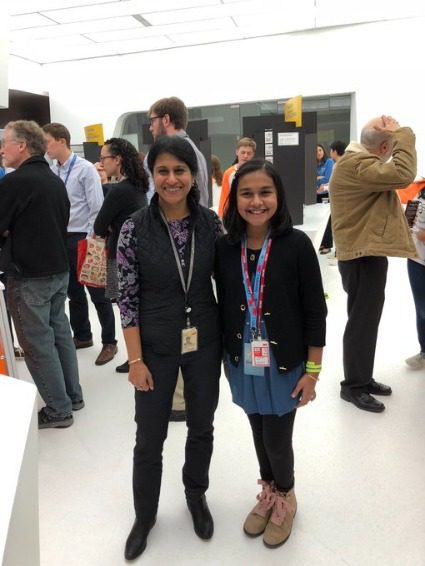
When Global Indians meet: Gitanjali Rao with 3M’s chief science advocate Jayshree Seth in 2018
Marvel’s hero project
Gitanjali was featured in the web series Marvel’s Hero Project as Genius Gitanjali for her valuable contributions to society.
“I think that being a scientist is like being a superhero, because superheroes save people, and want to do what is best for their society – scientists do the same exact thing,” she earlier told Google.
Read a similar story of Prafulla Dhariwal, the mind behind OpenAI’s GPT-4o

